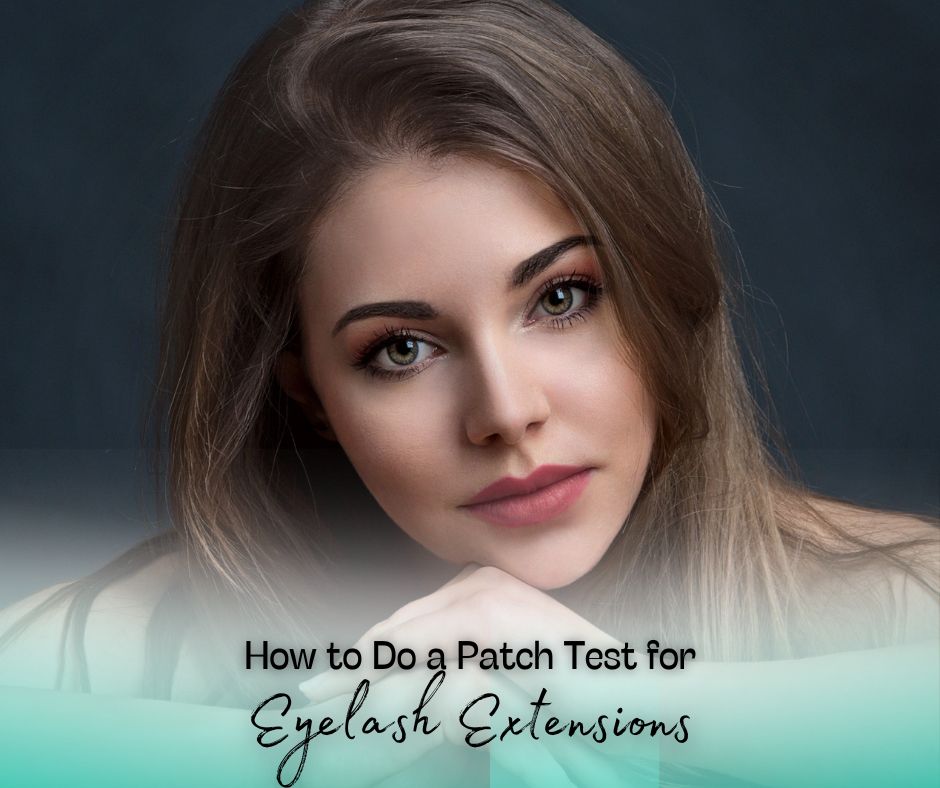

A crucial step is performing a patch test before getting eyelash extensions in Glendale, Arizona. A patch test for eyelash extensions is essential because it helps identify if an individual is allergic to the adhesive used in the procedure.
Adhesive allergies can cause symptoms such as redness, swelling, itching, and discomfort. Conducting a patch test can detect potential allergic reactions before a complete application, allowing individuals to make informed decisions about proceeding with the procedure. This simple precautionary step helps ensure the safety and well-being of the individual and allows them to avoid potential complications or discomfort associated with allergic reactions to the adhesive.
Here’s a step-by-step guide on how to do a patch test for eyelash extensions:
1. Gather the Necessary Materials
You will need the adhesive used for the extensions, a cotton swab or pad, and a small patch of clean, dry skin (such as behind your ear or on your inner forearm).
2. Cleanse the Test Area
Before applying the adhesive, ensure the test area is clean and free of oils, lotions, or makeup. Gently wash and dry the area to be tested.
3. Apply a Small Amount of Adhesive
Take a small drop of the adhesive and place it on the cotton swab or cotton pad. Ensure you have enough adhesive to cover a small area but not too much that it spreads beyond the patch test area.
4. Apply the Adhesive to the Test Area
Gently wipe the adhesive onto the clean patch of skin. Ensure that the adhesive is evenly applied and covers a small area about the size of a dime.
5. Allow the Adhesive to Dry
Let the adhesive dry entirely on the test area. This usually takes around 24 to 48 hours. During this time, avoid getting the test area wet or applying other products.
6. Observe for Any Reactions
After the drying period, carefully monitor the test area for any signs of an allergic reaction. Look for redness, swelling, itching, or any other discomfort. If you experience any of these symptoms, it may indicate an allergic reaction to the adhesive.
7. Seek Professional Guidance
If you notice any adverse reactions during or after the patch test, it is crucial to seek professional advice. Consult with a lash technician or an ophthalmologist who can evaluate your symptoms and provide appropriate guidance.
Conclusion
Remember, even if the patch test yields no allergic reactions, it does not guarantee that you won’t develop a reaction during the complete eyelash extension application. Allergic reactions can occur unexpectedly, so you must remain vigilant and communicate any concerns with your lash technician.
If the patch test indicates an allergic reaction, avoiding eyelash extensions or exploring alternative options, such as hypoallergenic adhesives or different lash materials, is advisable.
Patch testing is a valuable precaution to minimize the risk of adverse reactions to eyelash extension adhesives. It is a simple and effective way to ensure safety and comfort during the procedure.
If you want an eyelash extension experience that is as safe as possible, contact Raw Beauty Lounge to see what we can do for you!
Here’s how to maintain your eyelash extensions HERE.

